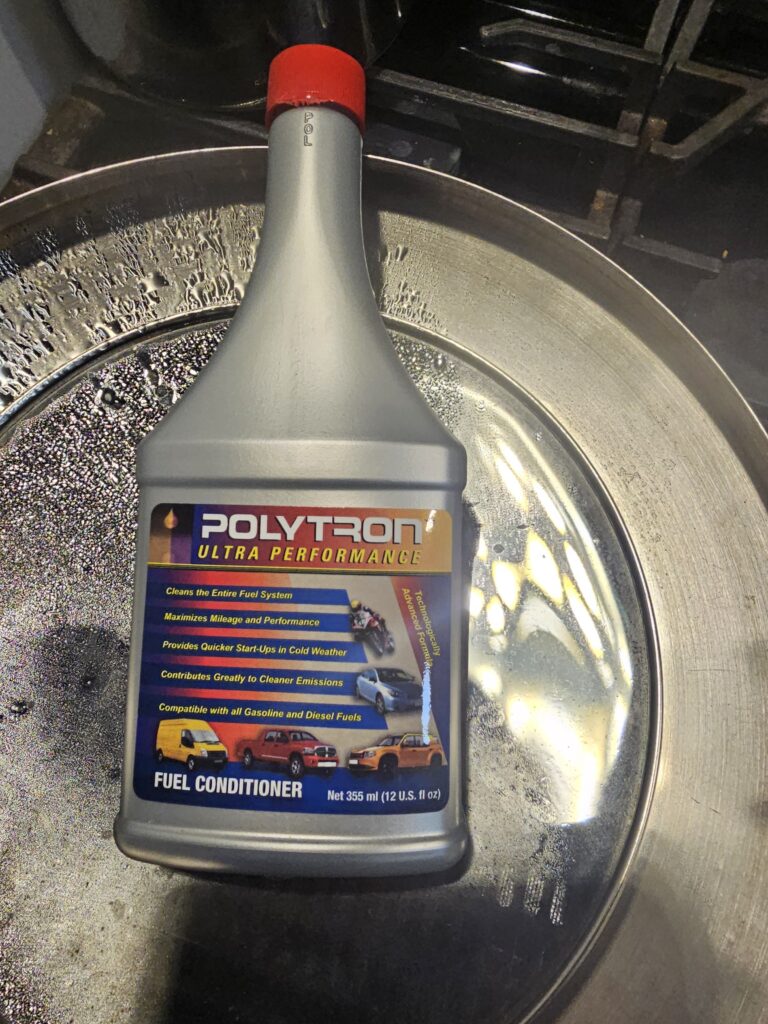Ever since lead was identified as a severe toxin, we’ve been seeking alternatives to improve the combustion in internal combustion engines, while at the same time producing cleaner air. MTBE, Methanol and Ethanol have all been used with varying degrees of success, and sometimes problems, such as when we found out the hard way that MTBE seeped through fiberglass oiltanks, because the molecules were so small. These additives could also deteriorate various gaskets in cars. Newer cars are designed to deal with this, but still these additives are very drying , and undermine engine lubrication.

Enter Polytron GDFC Fuel Conditioner
By adding Polytron Fuel Conditioner, you achieve more complete combustion, therefore better mileage, and better top-end lubrication of your car’s engine. What Polytron does, is to smooth out the metal surfaces by forming a semi-permanent bond with the surface under pressure, meaning the surfaces will be smoother. As a result, compression improves, resulting in more complete combustion and reduced emissions, while gas mileage improves at the same time. You need very little of this product. One 12 Oz bottle can treat 90 gallons of fuel, or 2 Oz for every 15 gallons of fuel you add to the tank.
The fuel cleaner keeps the entire fuel system and the upper engine clean from carbon deposits, including injectors, valves, valve seats, ports, upper piston rings, piston tops and the combustion chamber. Emissions are reduced by up to 75%. This applies as much for cars as for two-cycle engines. It also helps to remove water and prevent freezing of gas lines.
The net result of adding Polytron Fuel Conditioner to gasoline is that the service intervals of the fuel system can be doubled. You will also see the results for after you use this for a while, your tailpipe will be nearly clean. When combined with Polytron MTC lubeoil additive, which treats the lower part of the engine, the fuel consumption can be improved by up to 20%, sometimes even up to 30 or 35%, and service intervals can be doubled or tripled.
